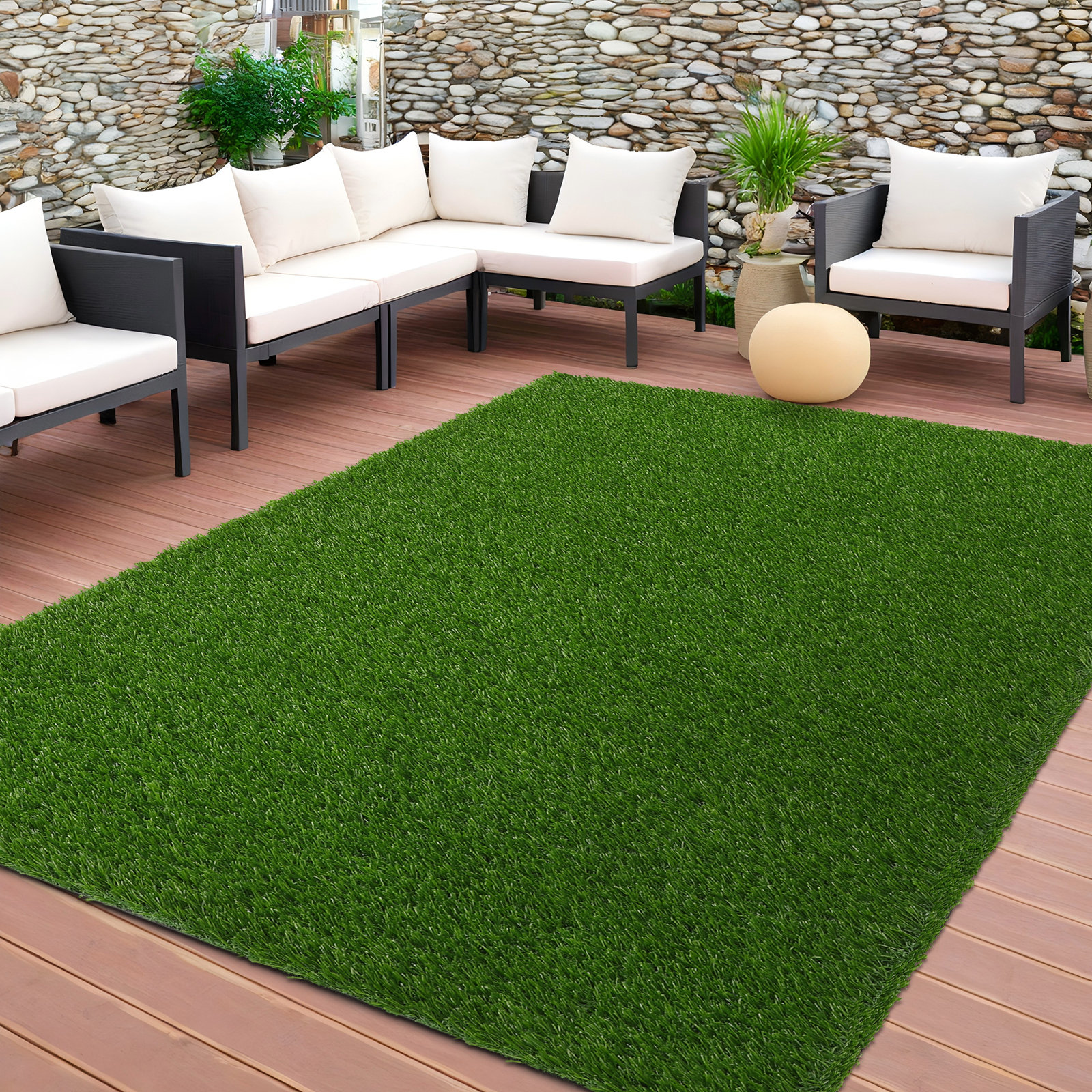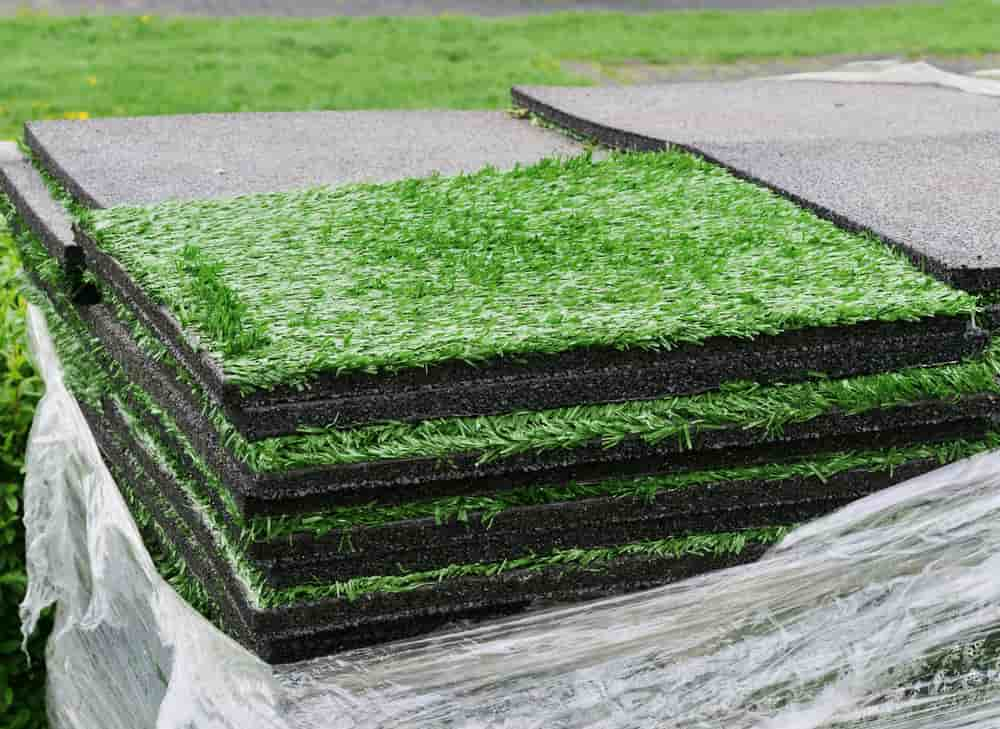Find Reputable Artificial Turf Companies Phoenix for Durable and Realistic Grass
Find Reputable Artificial Turf Companies Phoenix for Durable and Realistic Grass
Blog Article
Delve Into the Environmental Benefits of Opting for Synthetic Grass Solutions
The fostering of synthetic lawn solutions offers an engaging opportunity to resolve pressing environmental obstacles. By significantly lowering water use and minimizing the application of dangerous chemicals, these options not only advertise lasting landscaping yet likewise secure regional environments.
Water Preservation Benefits
One of one of the most significant advantages of synthetic grass is its capacity to preserve water. Standard yard lawns call for significant irrigation, specifically in locations susceptible to dry spell or water limitations. On the other hand, synthetic grass does not need watering, dramatically lowering the general demand for water sources. This feature is specifically helpful in deserts where water deficiency is a pressing concern.
By removing the requirement for routine watering, fabricated turf adds to lasting landscape techniques and helps mitigate the ecological impact of too much water usage. In addition, the preservation of water reaches the decrease of runoff, which can lead to dirt disintegration and waterway pollution.
In addition, the setup of artificial turf permits districts and home owners to designate water resources a lot more successfully, focusing on vital usages such as drinking water and agriculture. The shift in the direction of synthetic turf not just advertises responsible water usage however also lines up with broader ecological objectives intended at protecting natural deposits.
As neighborhoods increasingly prioritize sustainability, the water conservation advantages of synthetic grass provide an engaging situation for its fostering in industrial and household landscape design jobs.
Decreased Chemical Usage
The transition to fabricated turf significantly reduces the dependence on chemical therapies typically made use of in all-natural turf maintenance. Typical lawn administration usually entails the application of herbicides, pesticides, and fertilizers to advertise growth and control insects. These chemicals can pose threats to human health and wellness, neighborhood wildlife, and the setting, adding to dirt and water contamination.
In contrast, fabricated lawn removes the requirement for these hazardous compounds. By decreasing the release of artificial substances right into the ecosystem, man-made lawn promotes much healthier soil and water systems.
Furthermore, the absence of chemical overflow linked with synthetic turf installations assists secure regional rivers from pollution, sustaining aquatic life and keeping biodiversity. Arizona turf. As neighborhoods progressively focus on lasting methods, deciding for artificial lawn provides a practical service that aligns with ecological preservation objectives. With this change, residential or commercial property proprietors can appreciate rich environment-friendly areas without compromising environmental wellness, paving the means for an extra sustainable future
Reduced Carbon Impact

Moreover, the setup of synthetic grass can result in significant water preservation. Natural lawns require significant quantities of water for irrigation, which not only includes in the carbon footprint related to water removal and therapy however additionally pressures local water sources. On the other hand, synthetic turf needs minimal upkeep, needing no watering, thereby dramatically reducing water use and its linked energy prices.
Additionally, the longevity of synthetic grass adds to its reduced carbon effect. With a lifespan of as much as 15 years or more, the requirement for frequent substitutes is lessened, causing much less waste and reduced energy consumption in manufacturing and dealing with typical lawn options. Generally, synthetic grass provides a sustainable alternative for environmentally conscious landscaping.
Habitat Conservation
Habitat conservation is an important consideration in the dispute over landscape design selections, especially when contrasting artificial lawn to all-natural turf. All-natural grass lawns commonly need considerable maintenance, consisting of making use of pesticides, herbicides, and plant foods, which can detrimentally impact local communities. These chemicals can leach into the dirt and waterways, hurting indigenous plants and fauna and interfering with neighborhood environments.
In contrast, artificial lawn provides a chance to decrease the environmental impact of landscape design. By choosing artificial turf, home owners can reduce the interruption of all-natural environments connected with conventional lawn care methods. Synthetic grass eliminates the requirement for unsafe chemicals, thereby shielding nearby wildlife and preserving the integrity of bordering ecological communities. Moreover, the installation of synthetic turf can result in the conversion of previous grass areas right into more biodiverse landscapes, such as pollinator yards or native plant areas, which can support local wildlife.
Eventually, the shift to synthetic grass not only preserves water and decreases upkeep efforts but he said also fosters an extra harmonious relationship between human activities and the native environment, advertising environment conservation in the procedure.
Long-Term Sustainability
Long-term sustainability is an important consider assessing the benefits of synthetic grass over standard yard lawns. One of the most significant advantages of artificial turf is its durability; it can last up to 15-20 years with minimal upkeep, whereas all-natural lawn requires frequent reseeding and replacement. This durability reduces the requirement for continuous sources, such as water, fertilizers, and chemicals, which are important for maintaining a healthy turf yard.
Additionally, synthetic grass adds to a decrease in carbon discharges connected with grass treatment equipment. Conventional yards frequently require gas-powered lawn mowers, leaners, and blowers, all of which add to air pollution. Turf installation phoenix az. In contrast, artificial grass gets rid of the demand for such devices, advertising a cleaner atmosphere
Furthermore, the production of synthetic grass significantly utilizes recycled products, enhancing its sustainability account. As producers adopt green practices, the environmental impact of synthetic grass remains to diminish.

Final Thought
The adoption of synthetic grass solutions offers significant environmental advantages, including significant water conservation, reduced reliance on damaging chemicals, and a lower carbon impact. Man-made grass aids in protecting natural habitats by minimizing land disturbance and advertising long-lasting sustainability with the usage of sturdy products. Collectively, these variables underscore the capacity of synthetic grass to add positively to ecological health and supply a feasible alternative to traditional landscaping techniques in a progressively resource-conscious globe.
In contrast, synthetic grass does not require watering, significantly lowering the general need for water resources. By minimizing the release of artificial compounds view it now into the environment, fabricated lawn advertises healthier soil and water systems.
In addition, the setup of man-made turf can result in considerable water conservation. In contrast, artificial lawn requires minimal maintenance, needing no watering, consequently significantly decreasing water use and its linked energy prices.

Report this page